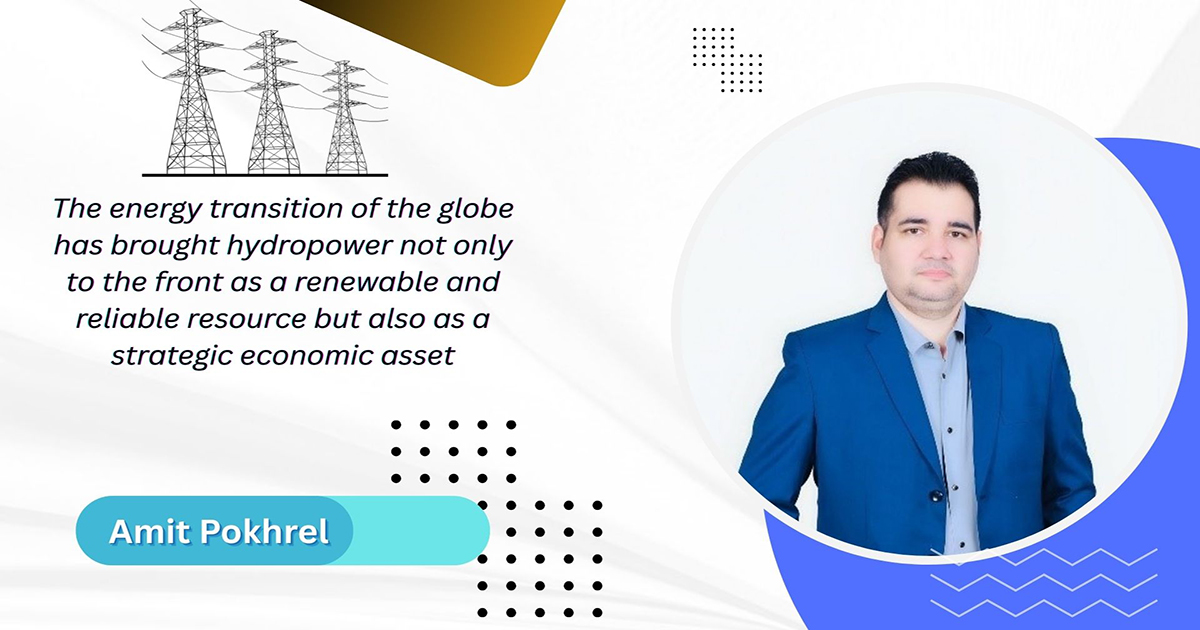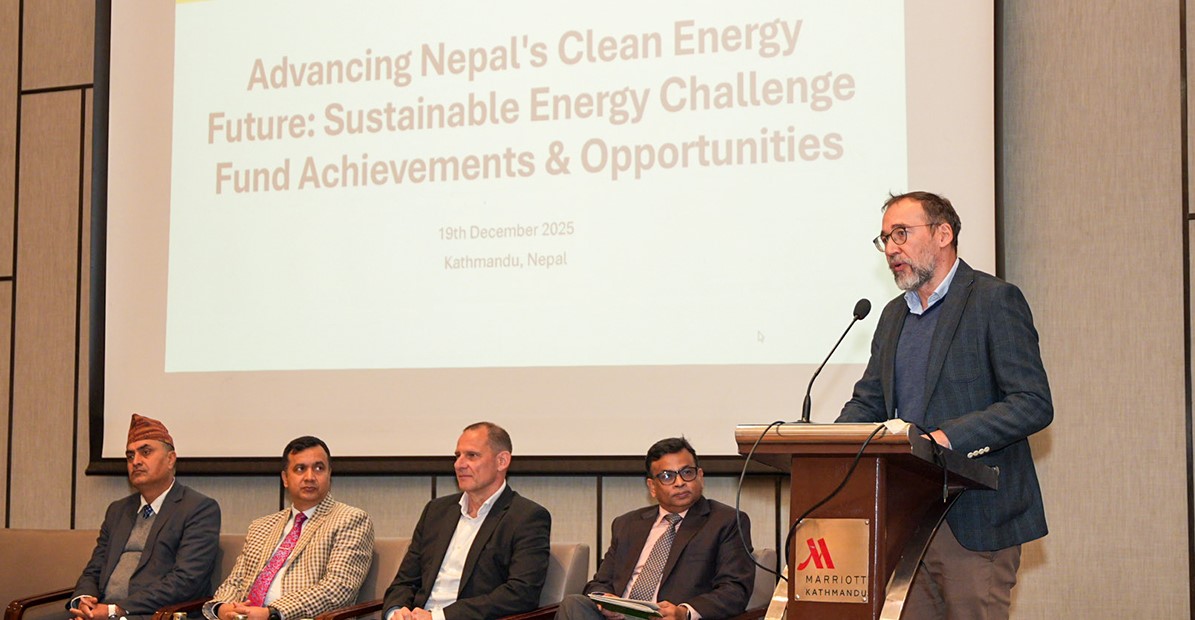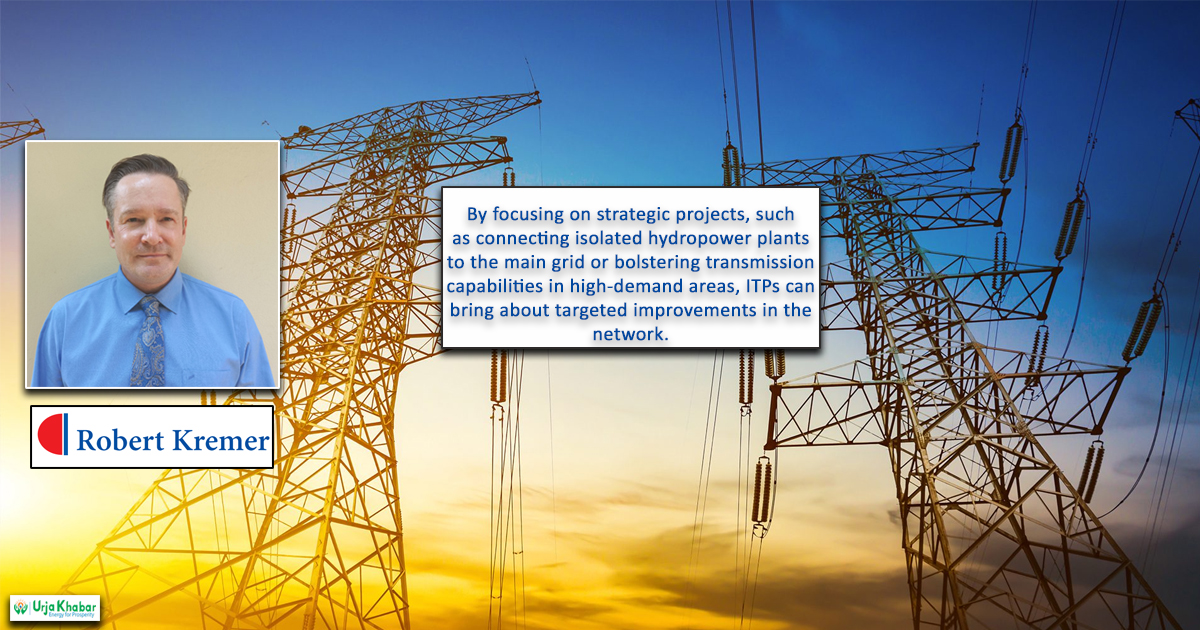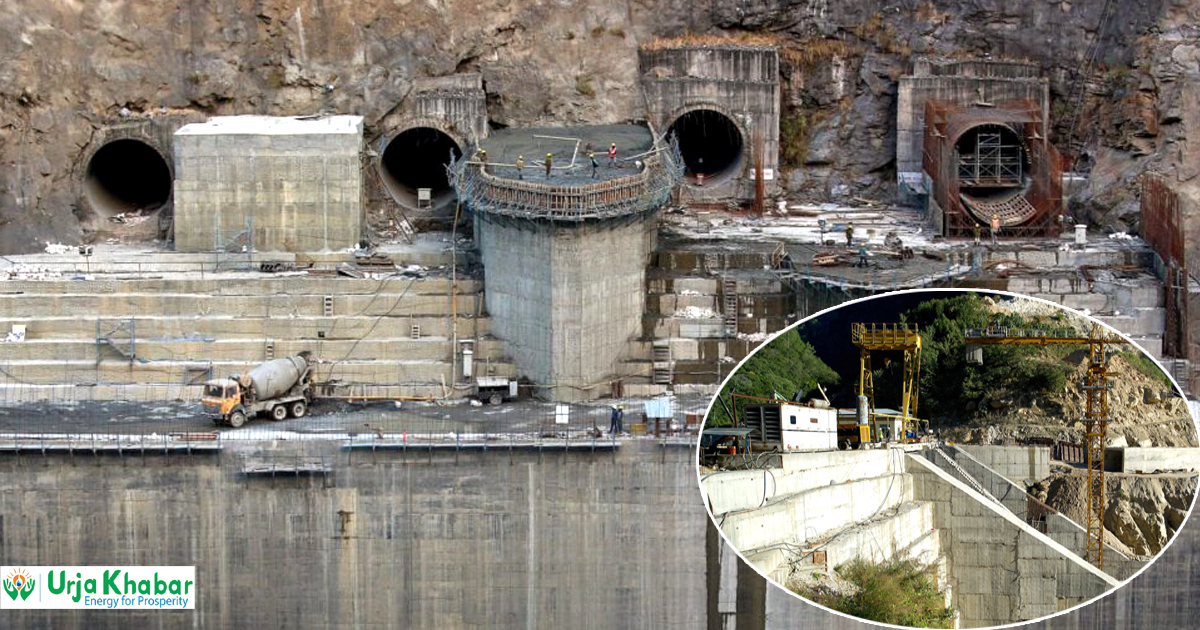Energy Update
Challenges in Land Acquisition and Management for Solar Energy in Nepal
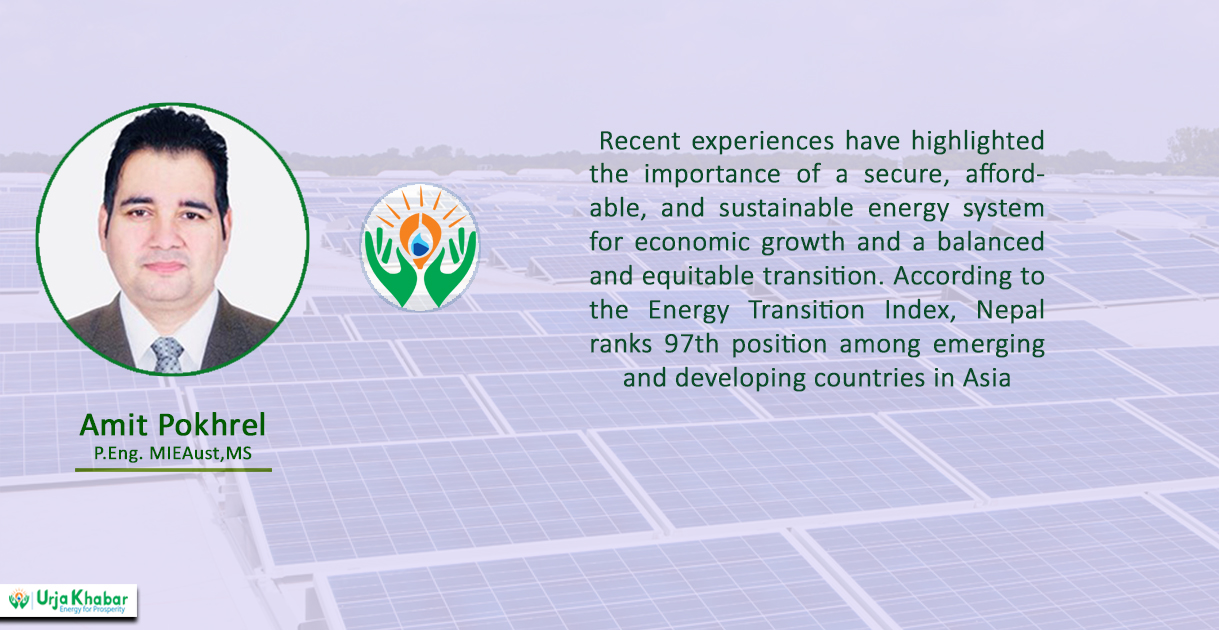
To install a solar power project of 10,000 kilowatts or more, it is necessary to acquire sufficient land, according to the related engineering guidelines. Initially, this land must be allocated to the project, as it will be the main source of energy development. The Government agency should devise a policy to address the current energy deficiency, considering the land acquisition requirements for solar power development. However, there is no particular template established by government bodies that can be used to allocate specific areas of land for solar power projects. Most developers face a dilemma when it comes to purchasing land, as it invites a higher cost of developing solar projects.
In Nepal, numerous investors and developers are constructing solar projects based on the study guidelines provided by the Department of Electricity Development (DOED). They receive a license and conduct a power purchase agreement with the Nepal Electricity Authority (NEA). The Government of Nepal must reconsider its development strategy as the purchase and acquisition of fertile land would lead to a decrease in food production, which adversely affects agricultural growth, leaving the area behind due to commercialization issues in the coming future.

The government is in the process of developing futuristic sustainability plans. While facilitating this, a study will be conducted on government lands on a lease basis to realize further development through public-private partnerships (PPP). This will enable the government to issue licenses to those potential investors who are willing to invest in the sustainable development project. The Government of Nepal can envisage a partnership model of 65-35% as a BOOT, which could benefit the government itself. On the other hand, private investment can also be secured if these models are opened for negotiation for development.
In the current situation, land is a major concern. Recent climate crises have caused most of the countries to struggle to maintain a balance between energy security, fairness, and sustainability. The Russia-Ukraine conflict has had a significant impact not only on Europe but also on global supply chains of energy. During such rhetoric conditions, energy supplies and infrastructure were heavily weaponized, revealing the weaknesses of the energy security structure. Developed countries with advanced energy infrastructure and well-developed supply chains had to resort to emergency energy supply measures.

At the same time, a highly concentrated fuel mix, a reliance on few trading partners, and a lack of investment in energy systems were identified as significant risk drivers. Consequently, oil and gas flows will likely be permanently redirected, resulting in the most significant re-balancing of the geopolitical landscape to date. The current energy crisis is unique in that it is the first of its kind with a global dimension, due to the interconnected energy supply chains, which necessitates a thorough re-evaluation of energy security strategies in the context of the evolving risk landscape.
In order to ensure a timely and successful transition, it is essential to not only improve system performance through the balanced energy triangle, but also to create a strong enabling environment. Recent experiences have highlighted the importance of a secure, affordable, and sustainable energy system for economic growth and a balanced and equitable transition. According to the Energy Transition Index, Nepal ranks 97th position among emerging and developing countries in Asia.
The energy crisis has had a significant impact on the accessibility of energy. The unprecedented increase in energy prices has had a particularly negative impact on poor households, as they have been forced to spend a greater proportion of their incomes on energy. Furthermore, the rise in food prices has caused a crisis in the cost of living for many countries. Furthermore, the energy market volatility has hurt the competitiveness of industries that rely on energy. As a result, businesses are increasingly looking to switch to more cost-effective and reliable markets, which have raised questions about the sustainability of local economies. This report provides a data-based framework to assess and understand the impact of energy systems on the energy transition and the readiness for the transition across countries.
The success of energy transition is contingent upon the development of a strong enabling environment. This includes a strong regulatory framework and the capacity to attract and deploy large-scale capital. Additionally, a comprehensive policy framework, energy efficiency, and access to energy must be combined with a strong, ambitious, and credible plan to reach net zero emissions, underpinned by efficient carbon pricing. An investment climate that is characterized by low capital costs, availability in domestic markets, and the attractiveness of foreign direct investment is essential for the mobilization of increasing amounts of capital towards the energy transition. Furthermore, advanced economies must ensure that they are prepared to mobilize $100 billion of climate finance annually for developing countries, as they are increasingly investing in emerging industries to foster future economic growth.
To ensure a timely and successful transition, it is essential to not only improve system performance through the balanced energy triangle but also to create a strong enabling environment. Recent experiences have highlighted the importance of a secure, affordable, and sustainable energy system for economic growth and a balanced and equitable transition. According to the Energy Transition Index, Nepal ranks in 97th among emerging and developing countries in Asia.
Much of the focus has, understandably, been on energy supply. However, according to the International Energy Agency’s Net Zero by 2050 pathway, to meet the Paris Agreement’s emissions goals by 2050, the world will need to consume 8% less energy than it does today. At the same time, the world’s economies will need to grow sustainably to provide for 2 billion more people. This means that energy consumption as a portion of economic output as well as the carbon intensity of the energy individuals consume will have to decline – that is, people will have to be smarter and more efficient in their energy use.
Financing the energy transition has remained a major challenge and opportunity for financial institutions, particularly in Nepal where the majority of business finance is provided by banks. However, the challenge is not insurmountable as long as the relevant stakeholders, such as businesses, public and private sectors, and related authorities, work together to create a low-carbon, cost-effective, and reliable energy system. Numerous countries are emphasizing sustainability in their policies and programs, which include energy conservation measures, renewable energy technologies, innovations in energy storage, grid modernization, and more. The importance of the energy transition for social and economic development cannot be overstated.
The energy sector has a vital role to play in stimulating economic growth. However, the energy transition could lead to significant costs and disparities if not managed effectively, especially for the world's most vulnerable people. This necessitates difficult decisions for leaders, especially in developing and emerging economies, to promote economic growth that optimizes social well-being while providing access to plentiful and diverse energy sources at competitive prices.
Governments and economic stakeholders from around the globe are increasingly aware of the importance of energy security, which has a wide-reaching impact on supply chains, countries, and global systems. People, businesses, and nations expect reliable and uninterrupted energy supply at reasonable prices. To ensure the energy supply and demand remain stable at both the national and international levels, countries must have faith in each other's ability to meet their energy requirements. Any disruption to the global market could lead to serious economic and social instability in the future.
As the solar power industry continues to expand and states consider increasing solar penetration, the area of land needed for solar projects will increase. With careful planning, solar development can have a positive impact on the environment and local communities. Utilizing the sun's energy and converting it into electricity is one of the most advanced and cost-effective ways to generate pollution-free, renewable energy. To generate electricity at the level necessary to meet ambitious carbon emission reduction objectives, long-term planning is necessary for the efficient and responsible development of projects. Nepal has a vast potential for solar power generation. In a mere five minutes of sunlight, enough electricity can be generated to meet the entire electricity demand for a month.
Depending on the technology, the minimum area of a solar power plant can start from 20 bighas to generate 10 MW of electricity. In contrast to fossil fuel-based power plants, the development of solar power plants necessitates some land grading and the removal of vegetation. For instance, many Concentrations Solar Power (CSP) power plants must be built on land with a slope of less than 1 percent. On the other hand, Utility-scale Photovoltaic (PV) power plants can be constructed on land with a steeper slope and not having access to water. By implementing federal policies to expedite the growth of Utility-scale Solar Energy, Nepal can continue to create jobs across the country and diversify its energy portfolio. It is one of the fastest and most effective methods of reducing carbon emissions and paving the way for a clean energy future in Nepal.
The siting and permitting of a solar power plant are a complex process that must take into account a variety of factors, such as land use, transmission access, and water rights. Securing access to a suitable location is only the initial step in the process of setting up a solar power plant. Solar power plants must be subject to rigorous review processes conducted by Federal, provincial, and local regulatory bodies. Solar companies offer comprehensive project construction plans, perform numerous environmental assessments, and suggest mitigation strategies to assist in this process. This, in combination with modern utility-scale solar energy technologies, ensures that any environmental impacts are minimized. Currently, most solar power plants operate on privately owned land, and when proposed on private land, various state and local authorities must approve the project before construction. Siting and permitting can take between three and five years to be completed. The Department of Energy (DOE) encourages the adoption of best practices and policies that facilitate the permitting of eligible projects.
When it comes to solar power plants on public land, the environmental review process can take between three to five years. If the plant is on private or disturbed land, it can take even less time. The ROW permits have to go through a rigorous review before they can be issued, and the authorities need to follow the Solar Energy Policy Act too. Companies need to provide detailed plans for the project, as well as an environmental impact assessment and mitigation strategy. They also need to provide an official Environmental Studies for each project, before they can issue an official ROW decision. Whether it's CSP or PV, solar power plants can produce pollution-free power with impacts on the local water supply that are similar to, and often lower than, traditional fossil power generation.
For a solar farm to be eligible for development, the land must be at least 10 bighas in size, or 30 bighas if the project is of a utility scale. For example, if one kilowatt of solar panels is installed on a 100-square-foot plot of land, the area would need to be 100 square feet of land. It is important to note, however, that local municipalities may not permit the entire parcel to be used for a solar farm. A flood risk assessment is conducted before the start of any project, as this will determine whether the land is subject to future flooding or not. If the assessment reveals a high likelihood of flooding, the project will likely not proceed. However, this does not necessarily preclude the construction of a solar farm.
The Author of this article works as a Senior Contract management and Project Expert in the Energy Business of Golyan Group and is a Professional member of Engineer’s Australia.
Reference:
1. Optimal-Number-of-Banks-and-Financial-Institutions-in-Nepal.pdf (nrb.org.np)
2. Renewable energy in Nepal - Wikipedia
3. Solar energy: Nepal’s most sustainable resource - The Himalayan Times - Nepal's No.1 English Daily Newspaper | Nepal News, Latest Politics, Business, World, Sports, Entertainment, Travel, Life Style News
4. Solar energy with pumped storage hydro in Nepal (hydropower.org)
5. Renewable Energy and Future of Sustainable Development - myRepublica - The New York Times Partner, Latest news of Nepal in English, Latest News Articles (nagariknetwork.com)
Conversation
- Info. Dept. Reg. No. : 254/073/74
- Telephone : +977-1-5321303
- Email : [email protected]






